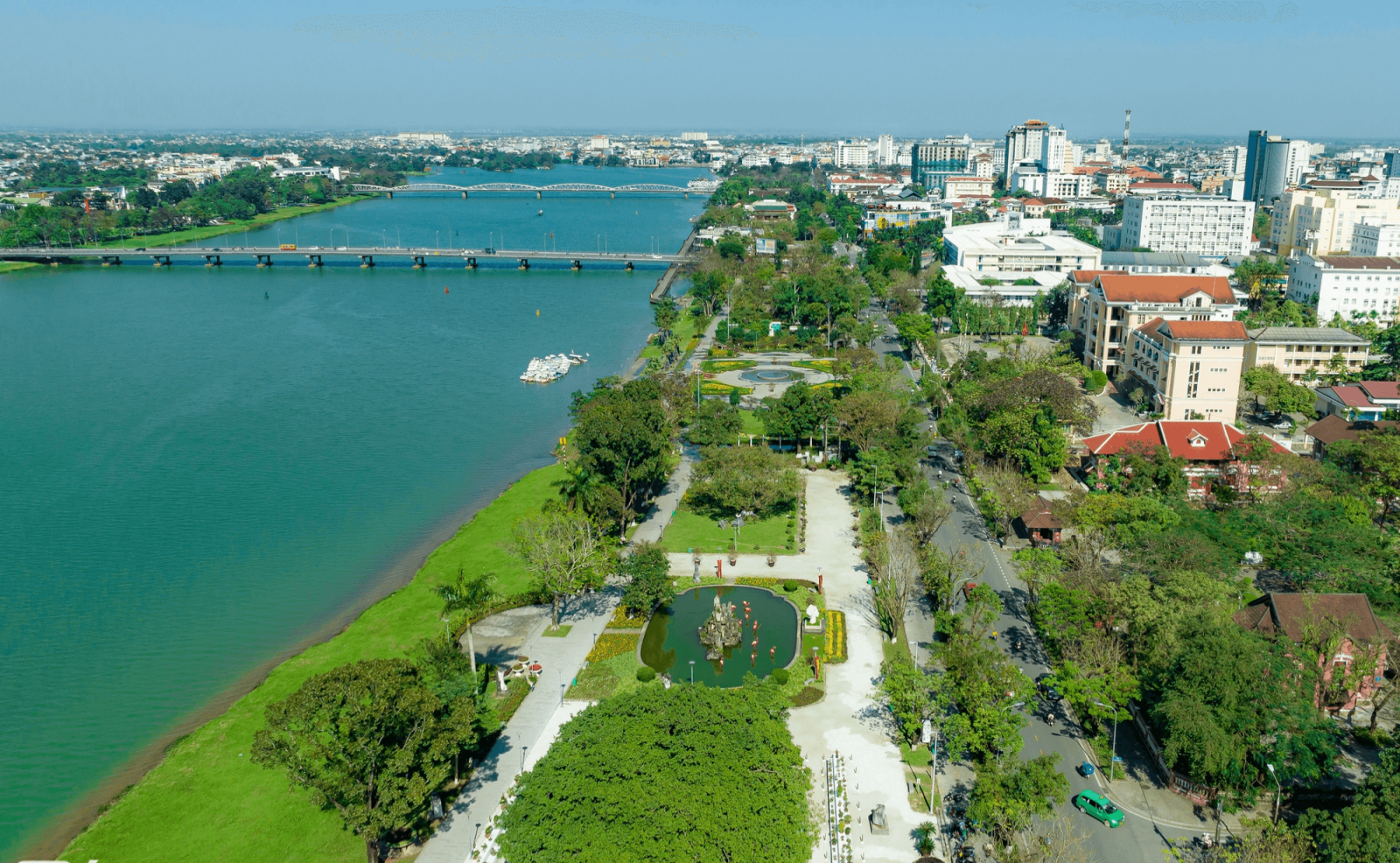
Share:
Amid increasingly complex climate change impacts and rising environmental pollution, Vietnamese cities are facing an urgent need to shift their development models. Moving toward green, safe, and climate-resilient living spaces has become a priority, requiring a comprehensive approach that combines policy, technology, finance, and public awareness.
In recent years, Vietnam has implemented various international cooperation programs to mobilize resources, advanced technologies, and management expertise. A notable initiative is the project “Integrating Climate Resilience and Environmental Protection for the Development of Green Secondary Cities”, jointly carried out by the Ministry of Agriculture and Environment, the Global Environment Facility (GEF), and the Asian Development Bank (ADB).

According to the Institute of Strategy and Policy on Agriculture and Environment, the project aims to strengthen institutional capacity in environmental management, enhance resilience to climate change, and promote sustainable development pathways for secondary cities.
The project consists of four main components:
-
Developing a national policy framework on environmental protection and climate resilience.
-
Piloting green urban development models in three cities.
-
Researching and applying innovative financial mechanisms to mitigate climate risks.
-
Supporting integrated environmental and climate adaptation planning at provincial and city levels.
The three pilot locations include Hue, Tuyen Quang (formerly Ha Giang City), and Phu Tho (formerly Vinh Yen City). Key activities involve organizing workshops and training, drafting legal documents, applying legal–technical tools, formulating Green City Action Plans (GCAPs), adopting smart urban management solutions, promoting circular economy practices, advancing sustainable production and consumption, and testing eco-label criteria for environmentally friendly products and services.
Beyond infrastructure improvements and environmental governance, the project also places strong emphasis on communication and community engagement, encouraging participation from local authorities, businesses, and citizens. This creates a solid foundation for building climate-resilient secondary cities with green development orientations.
In addition, the project develops guidelines for assessing climate vulnerability in secondary cities and supports businesses in greenhouse gas inventory and verification, thereby contributing to Vietnam’s commitment to achieving net-zero emissions.
Latest news
Special Highlights of COP30: When the World Looks to the Amazon for Climate Action of the Future
COP30 marks the 30th Conference of the Parties to the UNFCCC (United Nations Framework Convention on Climate Change).
Criticality Assessment: The First Step Toward Building Resilience
Europe is entering a major transformation in resilience thinking. Under the Critical Entities Resilience (CER) Directive, organizations are not only required to manage risks but also to understand, demonstrate, and maintain the elements that are “critical” to their operations, economy, and society.
Carbon Trading Systems and the Reshaping of the Construction Industry’s Future
The construction industry is one of the largest sources of greenhouse gas emissions, accounting for around 37% of total global CO₂ emissions (IEA, 2022). The expansion of Emissions Trading Systems (ETS) beyond the energy sector into carbon-intensive industries — including building materials and operational processes — is reshaping the entire cost structure and competitive strategies of the construction sector.
Green Finance in Real Estate: Investment Opportunities and Strategies for Developers in Emerging Markets
The global real estate sector is both the largest source of emissions and the greatest investment opportunity in the journey toward net-zero. According to IFC (2025), greening the construction value chain could unlock USD 1.5 trillion in investment opportunities across emerging markets in the next decade.
LCA and EPD: Scientific Evidence for Transparency in Green Certifications
In today’s global context of increasing focus on sustainability, transparency in data has become a critical requirement in the construction industry. Two prominent tools that address this need are LCA (Life Cycle Assessment) and EPD (Environmental Product Declaration). Beyond helping projects earn credits in green building certification systems such as LEED or BREEAM, LCA and EPD are also long-term strategies to enhance credibility and value for projects.
ARDOR Green is recruiting the next generation of sustainable architects/engineers at the Bach Khoa Career Fair
Founded in 2005, ARDOR Architects has over 20 years of experience in architectural and urban planning consultancy, with participation in more than 150 projects and numerous international awards such as Top 10 Architects Ashui (2017) and BCI Asia Awards (2009, 2015, 2021).
Build Green, Build with ARDOR Green







